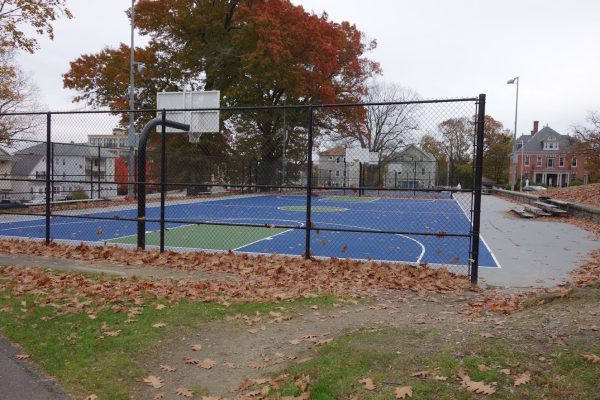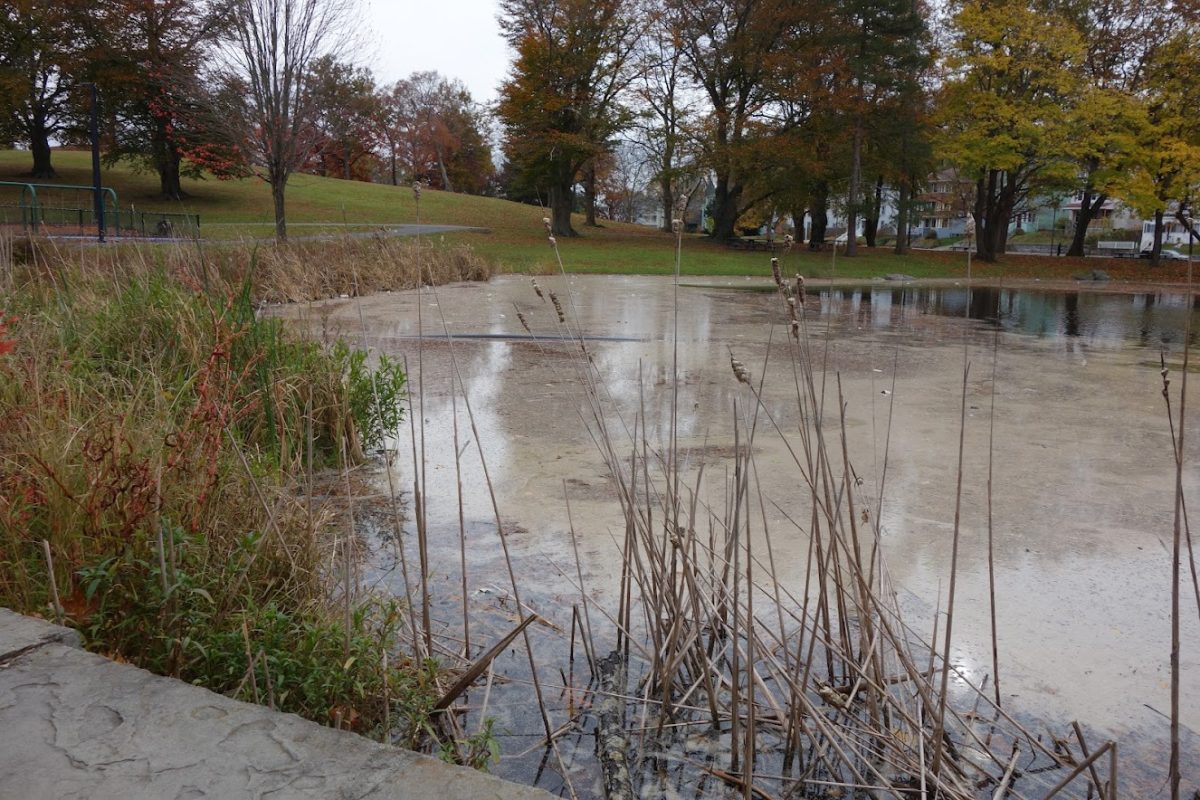University Park, a ~13-acre public park located adjacent to Clark University in Worcester’s Main South neighborhood, is the focal point of recreation and leisure in the area. The park’s proximity to Clark’s campus and the heavy traffic it sees from students and residents means its status and well-being are constantly relevant.
The land for University Park was acquired by the city in 1889 and it slowly built amenities like a playground, basketball court, pool (no longer), and volleyball court. The most iconic and no-longer-titular aspect of the park (formerly informally known as Crystal Park) is Crystal Pond, a 2-acre pond in the very center of the park.

University Park has undergone significant changes in its over 100-year lifetime. I intend to dissect the investments in the park from the City and Clark, and to interrogate further plans from the City to grasp its future.
The University Park Master Plan is the clearest informational resource drawing the park’s fate. Found on the City of Worcester’s website, the Master Plan contains some bare-bones contextual background to the park and explanation for the Park’s current design and layout.
The Master Plan came to be as a result of a “PILOT” (payment in-lieu of taxes) agreement between Clark and Worcester in 2010, as described through the City of Worcester’s website. This agreement meant the University was to pay “voluntary annual payments to the City of approximately $262,000.” These payments would increase by 2.5 percent annually, over the next 20 years.
As described by the official announcement, the agreement “forges a partnership to improve public safety and the continuity of the Clark campus,” which included the plan to pedestrianize part of Downing Street (a section now fronting Wright Hall). Clark paid $1.5 million to the city upon approval of the plan.
While some of the money went towards the Worcester Public Library, the city dedicated about $1.5 million towards University Park’s master plan. The master plan’s total cost landed around $5.5 million, meaning only “phase 1,” as described in the plan, has been funded and carried out so far.
The City estimated in their announcement that “in total, these overall voluntary payments will amount to more than $6.7 million over the 20-year life of the agreement.” Whether this money would all be directed towards the 5.5-million-dollar total of the master plan is unclear.
The announcement was littered with comments about increasing the “safety” of the neighborhood. This meant installing numerous light posts and security cameras, turning the public green space into a surveilled area.
A park-goer could almost hear the ideas of an early 2010’s engineering design firm whispered in the wind. They perhaps are talking about re-invigorating University Park by “providing safe active and passive recreation areas, preserving and enhancing the site’s natural features, and creating a positive neighborhood identity.”
With regards to preserving and enhancing the site’s natural features, a major upgrade to Crystal Pond from the Master Plan was reshaping the water’s edge towards the center on the northeastern most side of the pond. This included building a permanent retaining wall and placing several benches for enjoying the pond’s ambience.
Ultimately, the physical outcome of the one and a half million-dollar investment manifests in surveillance, relocation of courts, and pond improvements.
The park has great bones, but dull engineering firm planning continues to dilute its best attributes. The racetrack of a walking path that circles the pond is one of my least favorite parts of the park. This was acknowledged in the master plan, but not combatted in any way. It encourages continual circling but not static behavior, something that should be a given with an attractive, green park in the heart of a neighborhood.
Related to the magnetism of University Park are the recreational options. A new volleyball court was built, the basketball courts were expanded, and the playground was expanded. These improvements are huge.
Humorously, the City’s website advertises ice-skating as one of the possible activities you could enjoy at University Park. It is hard to believe that Crystal Pond could ever have ice thick enough to trust, especially considering southern New England’s mediocre winters and the impact of climate change.
There is a figurative hole where the University Park pool once was. Resources to cool off in the summer heat are vital in Worcester, which has a severe case of the heat island effect. The Master Plan includes the addition of a spray park to replace the former pool, but this was not included in Phase 1 improvements.
Over 10 years after the initial creation of the Master Plan, the Worcester Telegram and Gazette reported that in October 2022, the City announced they received a $1 million grant from the National Park Service Land and Water Conservation Fund, and would be matching with $1 million of their own to be directly invested toward University Park improvements..
According to the Telegram and Gazette, This money would go towards the master plan’s spray park, a new playground, more shade from trees and structures, and accessibility accommodations at all of the entrances.

The spray park would be built on the space between the playground and the basketball courts. This is the flattest, most static area of the park. It seems like a righteous spot for a picnic, but currently not much draws park-goers to that area. The addition of a spray park would also include the erection of a building with bathrooms and mechanical facilities for its upkeep.
To my curiosity, the announcement also included no mention of maintenance or cleanup to Crystal Pond, despite its very obvious decline in condition and increase in litter.
In the same article from the Telegram and Gazette, Assistant Commissioner of the Worcester Parks Division, Robert Antonelli Jr., reportedly said during the announcement, “it’s going to be a million dollars in construction and another couple $100,000 in design money, as of right now.”
The telegram also reports Antonelli Jr. said construction would start summer of 2023 and be completed by summer 2024, ignoring possible supply chain issues.
According to the City’s municipal calendar, a public meeting occurred in September of this year to discuss a proposed change to the Master Plan meant to include an outdoor gym. As of November 2023, there is no publicly available design plan for the promised park improvements and spray park.
Also, a brief walk of my own concludes that there is no visible construction going on at any of the locations of interest. On the other hand, I counted about a half dozen newly planted trees.
It appears that the City is unsurprisingly behind on delivering any of the promised improvements to University Park. Both Clark University and the City of Worcester have been returning every 5-10 years to the park as a small gesture of investment into Main South. Despite the several million dollars pledged, I believe the park does not have nearly enough to show for it.


